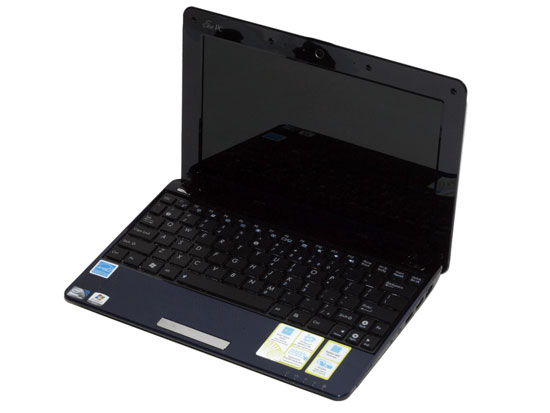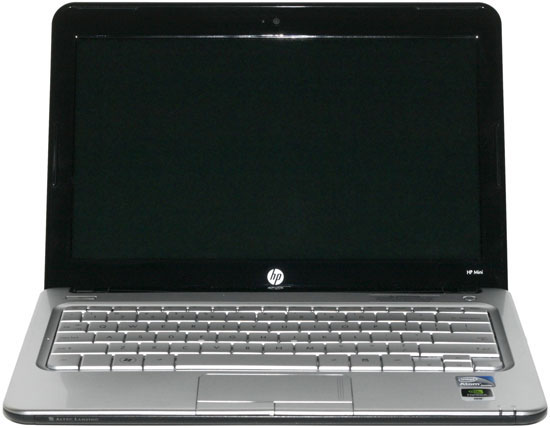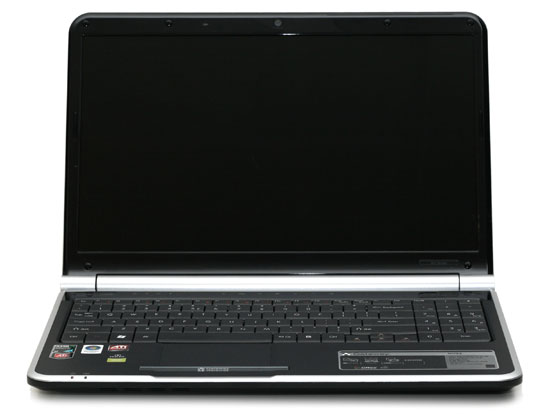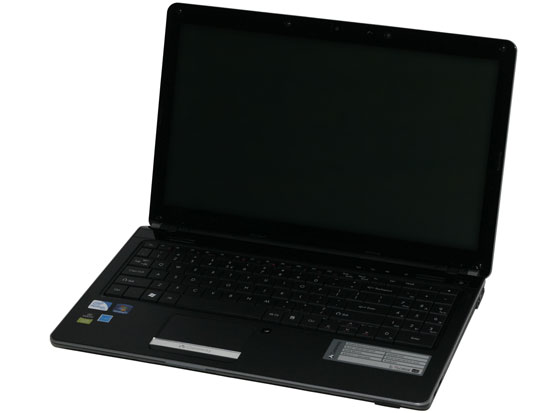Intel Core 2 CULV Roundup: Who Needs Atom?
by Jarred Walton on February 4, 2010 4:00 AM ESTMarket Recap (aka Conclusion Part 1)
We asked at the outset, "Who needs Atom?" It's now time to answer that based on our review today. What we really need to look at are the strengths and weaknesses of the various platforms at the various price categories. We've been over this ground before, but it bears repeating. We'll focus specifically on the entry level laptops and netbooks, with a price ceiling of around $800. Given those parameters, here's how things work out.

Sub-$350 is clearly the domain of the Atom-based netbooks, so it's definitely not dead. You'll sacrifice a lot in terms of performance, and features are also going to get cut. HD video decoding support generally isn't present, but we may see some netbooks start to ship with Broadcom Crystal HD to handle that. Intel also has their GMA 500 IGP that handles H.264 decoding quite well, but there were a lot of other issues with the drivers that made it a less than perfect solution. At present, look for Atom N450 netbooks for around $300 (give or take), and you can expect great battery life and very small form factors. So yes, Atom does have its uses.
$350-$500 is where things start to get messy. Atom netbooks obviously fall into this price range as well, but Microsoft won't let manufacturers ship Windows XP with more than 1GB RAM or a 160GB HDD. That's fine, but now you can get Windows 7 Starter (or even Home Premium in some cases) netbooks with 2GB RAM and larger HDDs. Battery life for such netbooks remains stellar, but the video decoding support is still lacking, barring a separate video decoder chip.

Another option that we encounter in this price range is NVIDIA's ION platform. ION works with the older Atom N270/N280, and battery life isn't as good as the Intel solution. The benefit is that you get full HD video decoding support - including the ability to play Blu-ray movies, assuming you have an external Blu-ray drive. Gaming is theoretically possible, but many games require more CPU power than Atom can deliver. Depending on the netbook features, ION looks to cut battery life by around 25% relative to non-ION N280 netbooks. So you can get better video support and around four hours of HD video playback and six hours of Internet surfing, or you can stick with vanilla Atom and get six hours of 720p (or lower) video playback, no Flash HD support, and up to ten hours of Internet surfing.
Need some more options? There are plenty of choices! CULV makes an entrance at just over $400, with battery life that's a bit better than ION netbooks. You also get 2GB RAM compared to most netbooks that ship with 1GB, and the GS45 chipset is much better than 945GSE so HD video content isn't a problem for the most part. (We're still waiting on full Flash 10.1 video support from Intel's IGPs, though.) Video playback can run for about 4.5 to 5 hours, and Internet battery life can reach seven hours.

If you prefer more performance and don't care as much about battery life, AMD laptops also make an appearance in this price bracket. You can find HP/Compaq and Acer/Gateway laptops with Athlon II M300/M320, 3GB/4GB RAM, and HD 4200 graphics for just under $500. These will typically be 15.6" notebooks rather than smaller form factors, and the size combined with the component choices will deliver battery life of around 2 hours for video, 2.5 hours Internet, or up to 3.5 hours in lighter loads. If you want to drop back to the older Athlon X2 CPUs and HD 3200 graphics, you can even get such laptops for around $400 (i.e. the Gateway NV52 line). We'd recommend against any of the single-core CPU solutions (AMD or Intel), as the lowered performance isn't backed by significantly improved battery life - CULV will do better in our opinion. Still, if you're okay with the compromise, you can find AMD Neo laptops as small as 11.6" with the MV-40 CPU. (Look at the MSI X610 results to see what sort of performance you'll get.)
Need even more choices? Well, they're there. Standard Intel-based (i.e. non-CULV) laptops are also available for just under $500 now, with CPUs like the Pentium T4300. The Gateway NV58 is representative of this class of laptop. Battery life is going to be around 2.5 hours for video, three hours for Internet, and up to 4.5 hours in light workloads. Basically, you'll get about 25% more battery life and 25% more CPU performance than the competing AMD solutions, but gaming isn't at all practical. (It's at least borderline on many games with the HD 3200/4200, with plenty of slightly older titles that run fine.)

At $500-$650 CULV really starts to show up a lot. Now instead of 2GB RAM, you get 4GB and generally larger hard drives. The Pentium SU4100 solutions are typically the best bang for the buck, with Core 2 Duo SU7300 usually adding $75 and only a small (5% or less) performance increase. SU7300 does add VT-x support, though, if you feel that's important. For battery life without compromising too much on performance, we feel CULV is an excellent choice. Laptops like the models we reviewed today would work great for college students, allowing you the freedom to work on papers and take notes all day at campus without the need to use an AC adapter. You can do the same with Atom, but these are faster and generally more capable. You still have to give up gaming performance, though - you'll need a discrete GPU with CULV if that's what you're after.
If you don't care about battery life and you want gaming performance, you can also turn to regular AMD and Intel laptops with GPUs like the Mobility Radeon HD 4330 or GeForce G210M (or 8200M/9300M). Another option is the new Core i3 laptops, with prices starting at around $600 for the i3-330M complete with 4GB DDR3, 320GB HDD, and the improved Intel HD Graphics. And from here the options begin to open up rapidly. As we've discussed already, the only thing you really need for CULV to handle games is a more capable GPU, and the ASUS UL line provides that as well as switchable graphics, giving you the best of both worlds. The smaller models cost a bit more, but the UL50Vt is currently selling for as little as $700. Don't like NVIDIA's GeForce line but still want CULV? Try the Lenovo U450P 33892GU for $800 (but we'd stick with the ASUS UL50Vt or UL80Vt).










62 Comments
View All Comments
JarredWalton - Thursday, February 4, 2010 - link
Still waiting for a review unit. I am also curious to see if Alienware allows overclocking, similar to the ASUS UL series. If they do, and with the GT335M, the m11x is going to be a very speedy machine in many respects. Of course, it's going to cost close to $1000 I imagine, but the features will probably make it worthwhile.synaesthetic - Friday, February 5, 2010 - link
There is a BIOS option to overclock the FSB on the M11x. According to the review, the SU7300 was overclocked to 1.6GHz with a respectable boost in performance and a negligible increase in heat (only a degree or two hotter).yyrkoon - Thursday, February 4, 2010 - link
I could not get past the brand name personally. Many people out there do their best to avoid the "greatness" that is Acer. I am just one of those people.clarkn0va - Thursday, February 4, 2010 - link
Maybe my information is just out of date, but my knowledge of the Acer Timelines differs somewhat from the information presented in this article.For starters, Jarred is stating that they have plastic covers. I own a 3810T and the cover is brushed aluminum (or a really good fake), thank goodness.
Secondly, it was my understanding that (at least some of) the TZ models had switchable graphics, enabling the user to switch from Intel to AMD graphics on the fly. Perhaps this isn't offered any more.
Lastly, and this is not Jarred's mistake, just an unfortunate reality, mine came with an 80GB Intel G1 SSD. This not only improves performance markedly, but should help to extend battery life. I think it's a shame that more desktops and laptops don't include this option.
AmbroseAthan - Thursday, February 4, 2010 - link
I was going to comment on this too. There are A LOT of differences within each Timeline series. I know there are 1810T's with aluminum rather then the plastic, and the new Olympic editions are very nice.Personally I own the 1810T (black plastic with SU7300) and couldn't be happier with it. It does have some of the problems Jarred listed, but you quickly adjust to the size of the trackpad; I haven't had any issues dragging things around the screen.
My brother owns the 3810T (Brushed aluminum w/ SU7300), and it is much more polished then the 1810T (blakc plastic). The little extra size really helped Acer make it a much nicer laptop. Even his keyboard is of a different material/style then mine. The touchpad is also different. He got his only a couple weeks after me, and I gladly would have taken the slight extra weight for the updates it had to everything else had I known.
JarredWalton - Thursday, February 4, 2010 - link
If I'm not mistaken (and I admit, I might be -- curse Acer and their plethora of SKUs that are all very similar!), the aluminum Timeline models are more expensive than the plastic models. At a price of around $750 to $800, I'd go with the ASUS UL80Vt and get switchable graphics. The Olympic Edition of the 1810 does look very nice, but can anyone confirm that it's truly aluminum? Look at http://www.newegg.com/Product/Product.aspx?Item=N8...">these pictures and it appears to be glossy plastic to me. Still, it's got the right parts and price ($550), if you're okay with the keyboard action.jabber - Thursday, February 4, 2010 - link
I'm a convert! Since I got my Inspiron 13Z with its 7300 it's been great. Similar grunt to an old P4 2.8Ghz dual core with a Nvidia 105 GPU and 4GB of ram.For a small laptop its perfect. Plays games just fine and if I set it to balanced power it can run for 8 hours+ easily.
tno - Thursday, February 4, 2010 - link
I hope not to start a flame war or cause any hard feelings or upset on Jarred's part, but I feel it's worth pointing out that this piece could have really used a polish. One of the great things about AT is that the coverage and the writing have always been equally high in quality. Certainly, the occasional typo or awkward sentence would sneak out, but on the whole it could be trusted that the articles read as if they had been reviewed by an editor.This article, however, did not feature the typical AT polish; a fact which was evident in the very first sentence:
"A couple years back, ASUS released the first netbook on an unsuspecting world."
While a conversational tone is certainly appreciated, the absent 'of' between the second and third word mar this sentence. The opening paragraph continues with several sentences which reach or border on being run-ons; and could easily stand the presence of a few semi-colons. Typos and word misuse ("differentiator" is a specialization mechanism in cell biology, and not a general term for the variable that separates members of a population) litter the first page, and would no doubt have been caught by a copy editor.
Again, I am absolutely a fan of this site and the wonderful articles produced here. Letting mistakes like these slip past, however, diminish the articles to the level of blog posts and not quality technical journalism. As the number of writers and staffers grow, it becomes harder to enforce high writing standards. If it hasn't been done, perhaps it's time to consider hiring some proof readers?
tno
QuietOC - Thursday, February 4, 2010 - link
Haha, Jarred lifted some of that wording from a sample review I submitted to them: "A few months later ASUS released the original Eee PC on the unsuspecting world market." There's nothing particularly unique about the language. I wouldn't be surprised if I unconsciously borrowed it myself.JarredWalton - Thursday, February 4, 2010 - link
The use or omission of the word "of" in the first sentence is entirely a stylistic preference. "A couple years ago..." or "A couple of years ago..." mean the same thing, with an extra syllable in the latter. As for differentiator:http://www.thefreedictionary.com/Differentiator">differentiator - a person who (or that which) differentiates.
I am using it as the latter, and it is correct in that sense. Sorry if I view the English language as more fluid than others, but I have no qualms about playing with words as I see fit. I would hope most people are more interested in the technical content than whether or not I follow the MLA guidelines.
If you really want to complain about my writing style, you'd be far better off saying that I have a bad case of word diarrhea, IMO. I write far more text than I often feel is necessary, but then if I omit certain aspects of a review I always get someone complaining that I "didn't talk about feature xxx". Another potentially valid complaint would be my use of parenthetical comments and phrases set off by dashes--and I'm sure I use dashes incorrectly at times! ;)